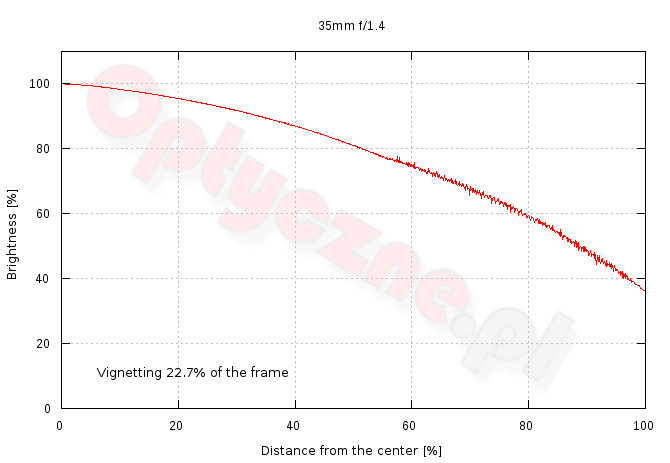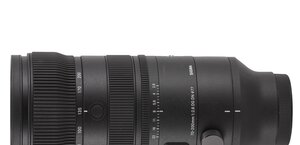Canon EF 35 mm f/1.4L II USM
8. Vignetting
| Canon 50D, f/1.4 | Canon 50D, f/2.0 |

|

|
There are chances to notice vignetting only at the maximum relative aperture where it amounts to 28% (−0.93 EV). On stopping down the lens to f/2.0 that aberration decreases to 12% (−0.38 EV). By f/2.8 the problem disappears completely because the brightness loss in the corners reaches just 7% (−0.21 EV).
Please Support UsIf you enjoy our reviews and articles, and you want us to continue our work please, support our website by donating through PayPal. The funds are going to be used for paying our editorial team, renting servers, and equipping our testing studio; only that way we will be able to continue providing you interesting content for free. |
- - - - - - - - - - - - - - - - - - - - - - - - - - - - - - - - - - - - - - - - - - - - - - - -
Now let’s check how the situation changes when you pass to full frame.
| Canon 5D III, f/1.4 | Canon 5D III, f/2.0 |

|

|
| Canon 5D III, f/2.8 | Canon 5D III, f/4.0 |

|

|
When compared to its predecessor, but also to the Sigma or the Nikkor, the Canon is distinctively bigger; its significant dimensions indicated it might deal with the vignetting better than its rivals. Still the result we got by f/1.4, amounting to 64% (−2.95 EV), doesn’t impress us at all. It is better than its predecessor (which had a vignetting level of as much as 70%) and slightly better than the Sigma (which brightness loss amounted to 66%) but it remains noticeably worse than e.g. the Nikkor (60%) or the equally big Zeiss (55%). It is strange that big dimensions of the Zeiss were able to ensure good results in this category, especially when compared to the rivals, and equally big dimensions of the Canon failed to do so.
Stopping down the aperture to f/2.0 makes the vignetting decrease to 42% (−1.58 EV). By f/2.8 that aberration goes down to 23% (−0.75 EV), and by f/4.0 it is just 17% (−0.55 EV). By f/5.6 and f/8.0 the vignetting remains, within the margin of error, the same, amounting to 13% (−0.39 EV).
Below you see the averaged out values of brightness loss in concentric circles as you move away from the frame centre. The percentage numbers, presented in every picture, state the size of the real surface area, limited from above and from the right with a value of 100% and from below by the presented curve. That’s how you know how much light, overall, you lose due to the vignetting. Please, don’t mix up those percentage values with the ones, given at the beginning of the chapter because they are not directly connected with each other.

 |






